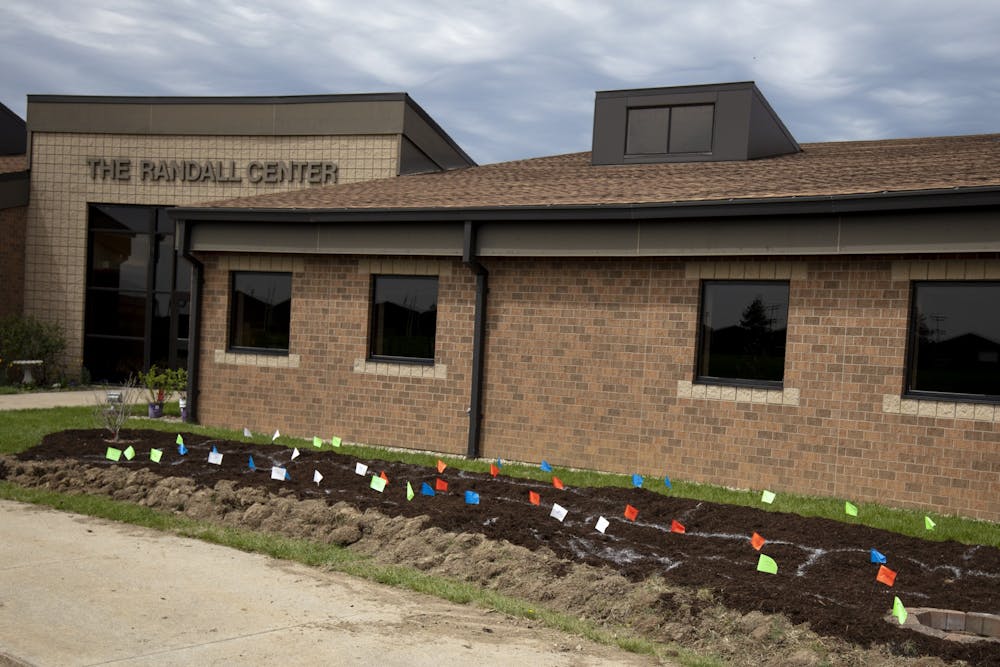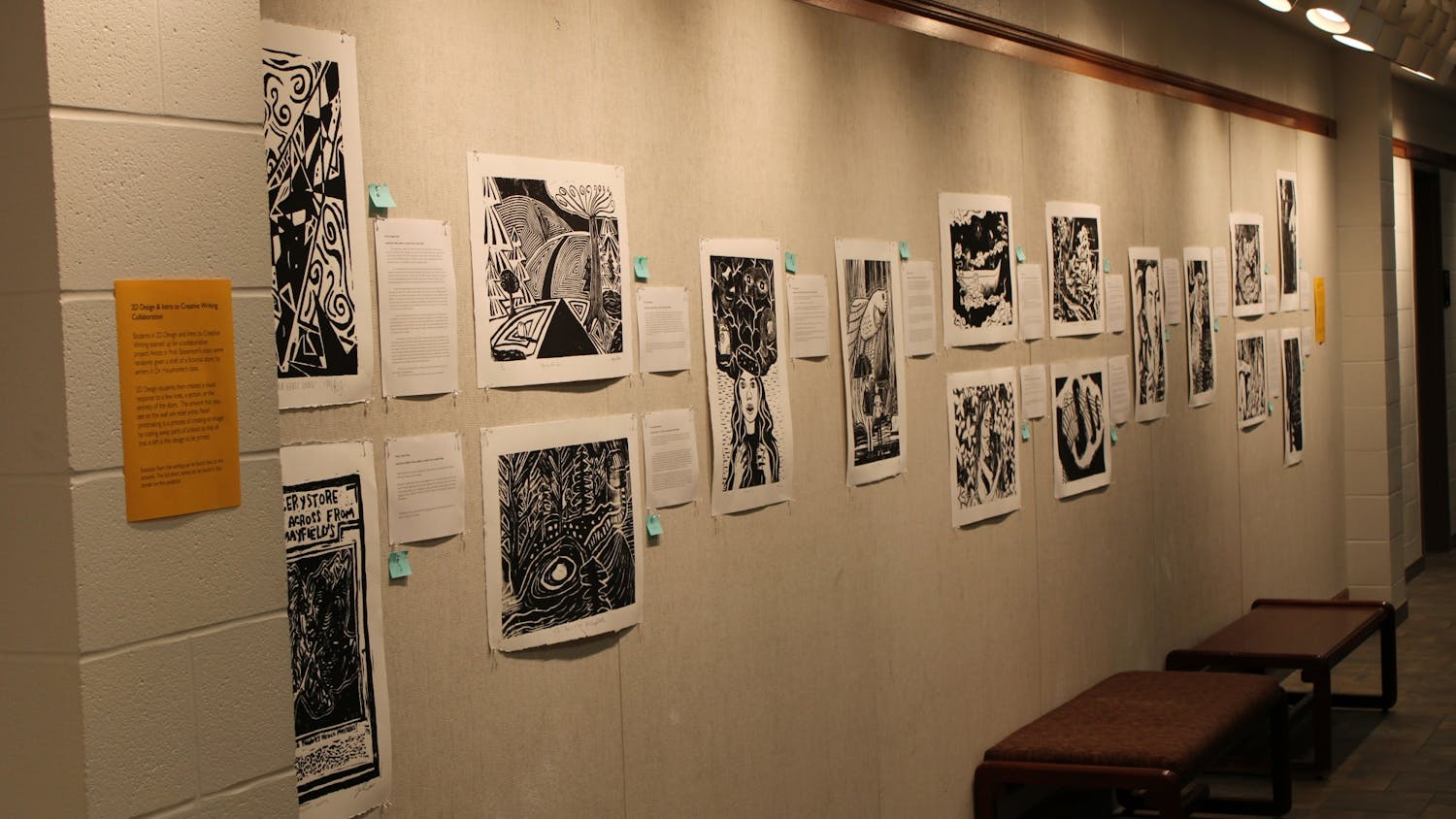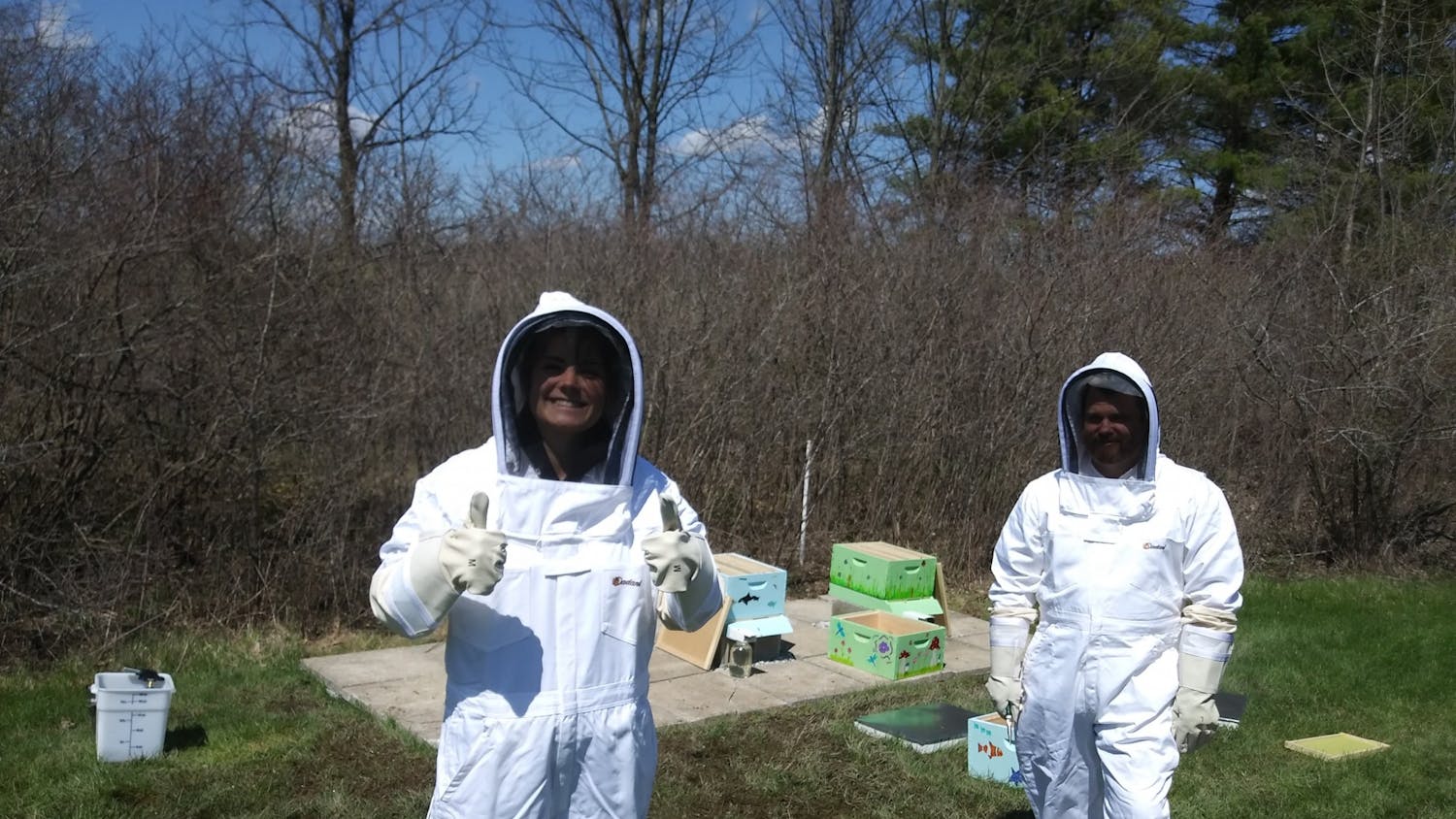Rain gardens are being built in front of the Randall Environmental Center by students and faculty. These gardens will help slow runoff rainwater from buildings.
“Rain gardens are kind of sunken gardens that capture runoff and force the water to infiltrate deeper into the ground,” Phil Grabowski, assistant professor of sustainable development, said.
Rain gardens help prevent possible flooding and allow water to soak into the soil. This is much better than allowing the rainwater to flow into rivers and streams and possibly contribute towards flooding.
In 2013, Michael Guebert, department co-chair and professor of geology and environmental science, taught the Environmental Planning course.
Students researched and designed a rain garden to be placed in front of Randall.
Overtime, students have finally begun creating the garden.
One of the many things that has helped this project progress is the help Taylor has received from Purdue Extension — an organization that provides scientific, research-based information and education.
“They teach people about agriculture, but also a lot of other things like taking care of the natural resources around us,” Grabowski said.
On Saturday, April 15, Purdue Extension hosted a workshop at Taylor University.
“We had a workshop where they kind of taught us a little bit about things that rain gardens do and what they’re good for,” freshman Jake Edwards said. “And then, what size and shape of plants we need to put in there.”
As an environmental science major, Edwards has worked directly on the project.
He is excited to see how the rain gardens turn out.
“I’m looking forward to kind of having those that work in front of Randall so we can use those to … show where the rain garden is and how to be sustainable,” Edwards said.
What has really impressed Edwards is seeing his professors work on this project alongside him and his peers.
During the workshop, Guebert did not lead anything. He was in fact participating in all the activities with the students.
This is a project that is going to have long-lasting rewards, which future students will benefit from. That is one of the most rewarding things, according to Edwards.
Rain gardens not only give the campus a chance to be more sustainable and beautify Randall, they can help educate people.
“While it serves a practical function here, it also will be a great educational resource to help students and the larger community to see, understand, and perhaps be motivated to install their own rain garden in the future,” Guebert said.
While these rain gardens are only being made outside of Randall there is still a potential to create more around campus.
Not only do rain gardens catch water that runs off of buildings, they are also quite beautiful according to Grabowski.
Another possible spot for a rain garden on campus would be outside the Hodson Dining Commons near the parking lot drains.
These gardens allow students and faculty to recognize God’s beautiful creation. They can help serve as a reminder to a world infused with technology and busyness, to go outside and enjoy the flowers and give thanks to the Lord, Grabowski said.
“I feel like stepping away from our screens, stepping away from our social lives, sitting quietly in creation can help remind us of the Truth,” Grabowski said.





